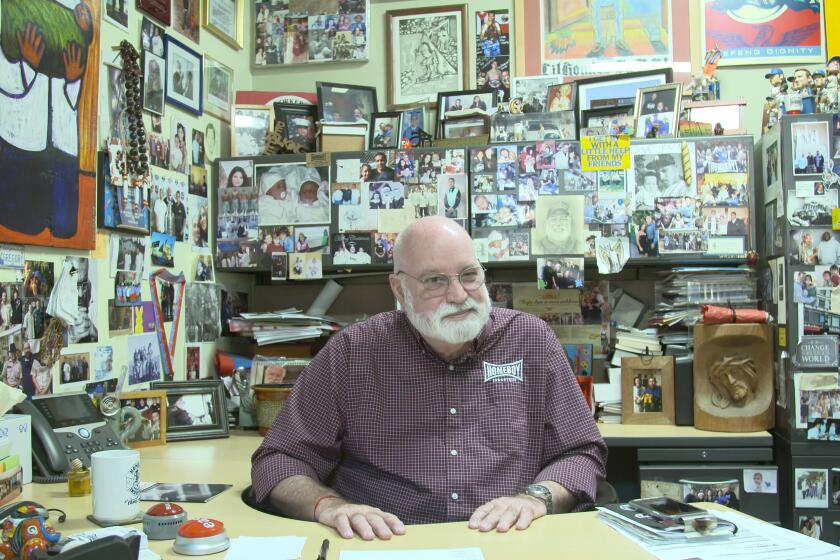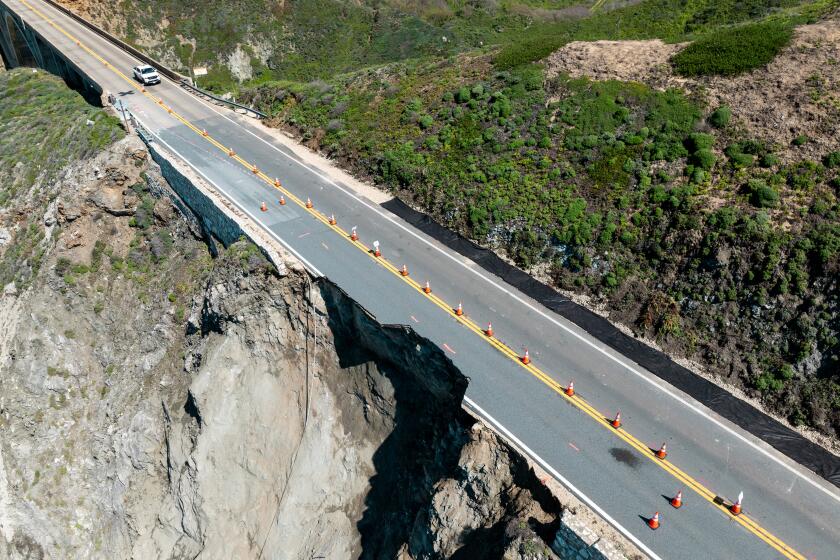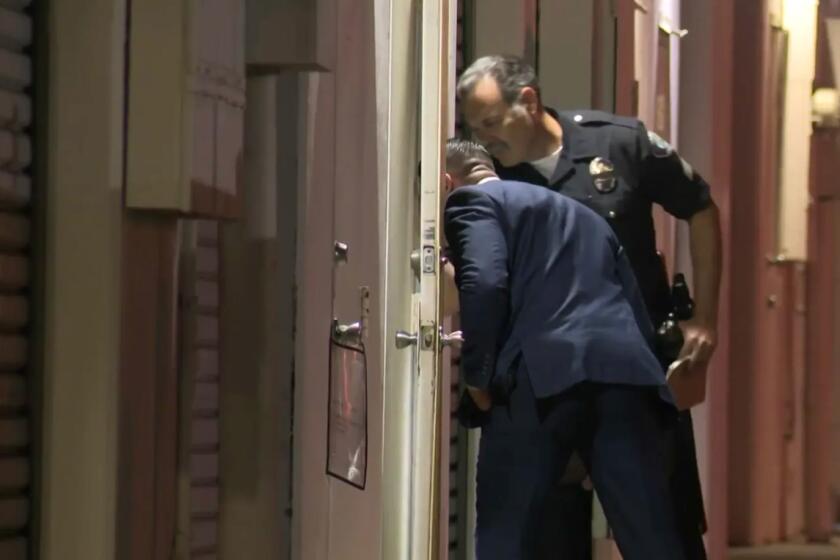BKK Landfill May Limit Disposal Unless Regulations Are Changed
The owners of the BKK landfill in West Covina say they may drastically limit disposal there starting next week, a move that the head of the county Sanitation Districts says would aggravate what is already a trash-disposal crisis in Los Angeles County.
BKK President Kenneth Kazarian said his company may impose drastic limits on disposal at its dump as early as Wednesday unless regulatory agencies agree to modify restrictions on placement of trash. BKK is seeking extension of a height limit on the disposal area.
If BKK limits its hours, it will exacerbate an already difficult trash-disposal situation countywide.
Trash trucks are regularly being turned away from the county’s largest landfill, Puente Hills in Hacienda Heights, said Charles W. Carry, general manager of the Sanitation Districts.
Early Close at Dump
He said the dump closes nearly every day by 2 p.m.--about three hours early--because it cannot legally take any more trash.
“Literally hundreds of trucks reach the dump every day and get turned away,” Carry said. “That’s a crisis.”
Most of those trucks proceed to the Sanitation Districts’ Spadra landfill in Pomona or to the privately owned BKK landfill. But the BKK option may disappear soon, and the Spadra landfill cannot handle the extra load, Carry said.
At Carry’s suggestion, directors of Sanitation District 2, which has jurisdiction over the Spadra landfill, last week authorized Carry to set daily limits on disposal at Spadra so that its existing weekly limit of 18,000 tons of trash can be stretched over six days.
The BKK landfill was Southern California’s largest disposal site for toxic waste until environmental problems that surfaced in 1984 forced the company to limit disposal to ordinary household trash and commercial waste. The company has been dumping the trash on top of the area where toxic waste is buried.
Since toxic dumping ended in November, 1984, BKK Corp. has been working toward closure of the toxic-waste area of the landfill and is awaiting approval of a final closure plan by the U.S. Environmental Protection Agency.
The closure plan calls for adding 40 feet of trash above a height limit that was imposed temporarily by the EPA and other agencies. Kazarian said the regulatory agencies have been receptive to the closure plan, but have been unwilling to lift the height limit, pending hearings which may not occur until November.
Meanwhile, Kazarian said, the dump is running out of space to put trash.
BKK has applied to the state Regional Water Quality Control Board for a permit to shift disposal operations to another part of the landfill where no waste has been buried, but approval is not expected until next spring. Before dumping can begin in the new area, BKK must install a liner and leachate-collection system.
Kazarian said BKK had expected that its closure plan would be approved by now and that it would be able to continue dumping in the old landfill area until June and then shift to the new area.
But BKK cannot stay open until June and continue accepting trash at the current rate of 6,000 tons a day without exceeding the temporary height limit, Kazarian said.
Thus, unless the limit is lifted, he said, the dump either must reduce its intake of trash or face complete closure until the new disposal area can be opened.
Michael Miller, community services manager for the city of West Covina who is a member of an inter-agency committee on the BKK landfill, said approval of the closure plan has taken longer than expected because BKK was slow to supply some information and because the host of regulatory agencies responsible for reviewing the plan have been slow in doing their work.
Angelo Bellomo, a top administrator in the state Health Department’s toxics division, said last week that regulatory agencies are reviewing BKK’s request to exceed the existing disposal limit.
Philip Bobel, chief of the waste programs branch at the EPA regional office in San Francisco, said the EPA is trying to determine whether the landfill really is, as BKK maintains, on the verge of reaching the temporary height limit, which for much of the disposal area is 900 feet above sea level.
It is possible, Bobel said, that there are small wedges in the landfill that are under the 900-foot level and could be filled in while awaiting hearings on the closure plan.
Kazarian said the BKK landfill currently takes about one-seventh of the 42,000 tons of trash generated daily countywide.
The Puente Hills landfill takes about twice as much trash as BKK and might handle even more but is limited by law to 13,200 tons a day. The Spadra landfill’s weekly limit of 18,000 tons will be translated into a daily limit of about 3,000 tons if the trash intake at BKK is restricted.
Restrictions on Capacity
Directors of the county Sanitation Districts last week directed Carry to restrict disposal at both Puente Hills and Spadra so that some of the dump capacity can be saved for residents who haul trash to the dump in pickup trucks and trailers on Saturday afternoons.
Carry said Puente Hills has been exhausting its capacity early on Saturdays, turning people away who have rented trailers or made a special effort to get a load of trash to the dump.
Carry said he fears that many people who are turned away are dumping their loads elsewhere illegally. By reserving some dump capacity for small haulers on Saturdays, he said, the districts may prevent illegal dumping.
More to Read
Start your day right
Sign up for Essential California for news, features and recommendations from the L.A. Times and beyond in your inbox six days a week.
You may occasionally receive promotional content from the Los Angeles Times.






